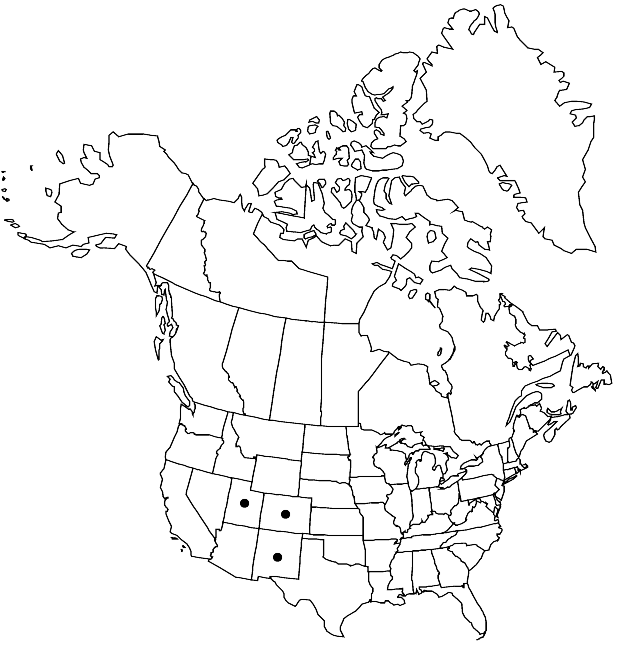Boechera duchesnensis
Harvard Pap. Bot. 12: 239. 2007.
Perennials; usually long-lived; apomictic; caudex often woody. Stems usually 1 per caudex branch, arising from center of rosette, elevated on woody base or from near ground surface, 1.5–4.5 dm, densely pubescent proximally, trichomes short-stalked, 2–7-rayed, 0.2–0.5 mm (sometimes mixed with some larger trichomes proximally), sparsely pubescent distally. Basal leaves: blade linear-oblanceolate, 2–5 mm wide, margins entire or denticulate, ciliate at petiole base, trichomes (simple), to 1 mm, surfaces densely pubescent, trichomes short-stalked, 4–8-rayed, 0.15–0.4 mm. Cauline leaves: 3–8, not concealing stem; blade auricles 0.7–2 mm, surfaces of distalmost leaves sparsely pubescent. Racemes 11–22-flowered, usually unbranched. Fruiting pedicels horizontal, straight or slightly curved, 7–14 mm, pubescent, trichomes appressed, branched. Flowers divaricate-ascending at anthesis; sepals pubescent; petals whitish to pale lavender, 7–10 × 1.5–3 mm, glabrous; pollen spheroid. Fruits horizontal, not appressed to rachis, not secund, usually straight, edges parallel, 3.5–5 cm × 1.7–2 mm; valves glabrous proximally, pubescent distally; ovules 72–92 per ovary; style 0.1–0.3 mm. Seeds sub-biseriate, 1.1–1.3 × 0.7–1 mm; wing continuous, ca. 0.1 mm wide.
Phenology: Flowering May.
Habitat: Sandy soil on rocky slopes, mostly in pinyon-juniper woodlands
Elevation: 1300-1800 m
Distribution

Colo., N.Mex., Utah.
Discussion
Morphological and isozyme analyses indicate that Boechera duchesnensis is an apomictic species that arose through hybridization between B. formosa and B. pallidifolia (M. D. Windham and Allphin, unpubl.). It is easily distinguished from those species by having fruits that are glabrous proximally and sparsely pubescent distally. It shares this distinctive fruit pubescence with B. xylopoda, an apomictic hybrid between B. perennans and B. pulchra (see Windham and I. A. Al-Shehbaz 2007b for detailed comparison).
Selected References
None.